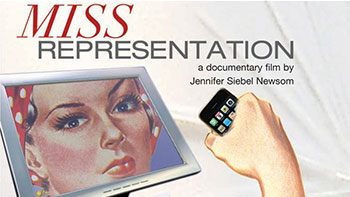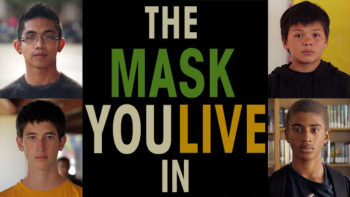On Sunday night, Steve McQueen’s 12 Years a Slave became the first movie directed or produced by a black man to win an Academy Award for Best Picture. The screenwriter, John Ridley, is only the second black man to win Best Adapted Screenplay. And Lupita Nyong’o became only the 6th black woman to ever win Best Supporting Actress. Meanwhile, Alfonso Cuarón became the first Latino to win Best Director (for the Sandra Bullock-starring Gravity) and Cate Blanchett used her speech to challenge Hollywood to make more movies starring women.
It was an undeniably significant night for the representation of people of color and women in popular film and beyond.
Yet, as we celebrate those achievements, it’s important not to forget the deeper ways in which people of color and women are still extremely marginalized in the film industry. While the Academy, under the guidance of Cheryl Boone Isaacs, is making some progress, it and the overall Hollywood community are still woefully behind-the-times.
One painful example is the historical and continued lack of representation for women of color in the most widely-seen Hollywood productions.
Our new infographic looks at the top 500 films of all-time – based on worldwide box office numbers from BoxOfficeMojo.com – and finds only 6 which have starred a woman of color.
It should be noted that we strictly defined “protagonist” here as the character around whom the primary story revolves. This discounted films like 1992’s The Bodyguard (#175), which, while largely remembered for Whitney Houston’s participation, was not written around her character, but rather Kevin Costner’s (I actually watched the entire film again and read the script to confirm. You’re welcome.)
Similarly, ensemble films like last year’s Pacific Rim (#176) – or any of the X-Men films with Halle Berry’s “Storm” – weren’t included because the women of color are not the primary focus of the stories. We almost made the case for 2000’s Crouching Tiger, Hidden Dragon, but by the time we completed the graphic it was no longer in the top 500 anyway (currently #508).[1]
So Whoopi Goldberg remains the only woman of color to have anchored a major worldwide hit movie. And as popular as Sister Act was in its day, it will most likely fall out of the top 500 within the next few years (at #447, it’s barely hanging on as it is).
Why is this significant? Well, from the perspective of most of Hollywood, it wouldn’t be a stretch to say these are also the 500 most important films ever made. The ones that made the most money – and thus the ones that have the most influence over what kinds of films continue to get made.
Also, for all intents and purposes, these are the 500 most seen films ever as well. Which means the cinematic stories which have reached the most people around the world, have almost never been about women of color.
Of course, taking into account ticket prices, inflation, pirating, DVD sales, streaming and more precise reporting might change these numbers a bit, but the data still tells a story about the kinds of films which typically get made into blockbusters.[2]
And, there’s no denying, films are made into blockbusters – not necessarily organically grown. Certain people get the funding, then get the marketing money, and eventually access to the widest distribution networks. There are exceptions to this rule – amazing stories which break through – but for the most part, you need lots of money in order to “become” a top 500 film.
For example, last year’s The Lone Ranger, starring Armie Hammer and Johnny Depp, was largely panned by critics, called racist and deemed a relative failure by almost everyone in the industry. But it still made $260 million worldwide, placing it at #386 on the all-time list. Why? The film had a budget of $215 million and was marketed by Disney, with the trailer premiering during the 2013 Super Bowl. Regardless of whether or not you think the film was wrongly derided by the press (or by pretty much everyone who saw it), the more important question to ask is: has a live-action movie, with a woman of color at the center, ever had a budget that large, and a marketing campaign that big?
Nope. In fact, it’s hard to think of a movie starring any woman that has had that kind of support behind it. In other words, The Lone Ranger was promoted by Hollywood more than every single woman-of-color-centered movie in history.
Furthermore, women of color who want to make their own films (which would likely be more representative of people like themselves), aren’t getting the opportunities or budgets either. Jennifer Yuh is the only one whose directed a film in the top 500, and Angela Robinson, the most successful black woman director of all-time, has only made a total of $144 million worldwide in her career (most of it coming from 2005’s Herbie: Fully Loaded). But she’s done that working on films with budgets of less than $60 million.
You might think, “well, Hollywood can’t just throw money at unproven directors,” but here’s some counter evidence from a piece written last year by Martha Lauzen and Jennifer Siebel Newsom:
Columbia hired Marc Webb, who had only directed a single feature, 500 Days of Summer, to direct The Amazing Spider-Man with a hefty budget of $230 million. Similarly, Universal hired Carl Rinsch to direct 47 Ronin, a Samurai story budgeted at approximately $170 million. When he was hired, Rinsch had only directed a few short films…
On the other hand, Anne Fletcher, who has directed three films since 2006 that have made more than $100 million in worldwide sales according to Box Office Mojo – including The Proposal, which grossed $317 million globally in the same year that Webb’s debut grossed $61 million – has never helmed a film with a budget larger than $40 million!
So we shouldn’t interpret the above graphics as proof that audiences don’t want to see women of color on screen. Quite the contrary, it’s overwhelming evidence that Hollywood has frustratingly chosen not to represent a huge portion of its audience in the movies it puts the most money behind. And we, as audiences, have never had much say in things. The movies that arrive at our local theaters already have their budgets determined – their blockbuster “potential” pre-ordained.

Which is even more significant when you think about the global audience for film. While white people may make up the majority in the United States, they certainly don’t worldwide. And yet white men are still the primary protagonists of our most watched movies, everywhere.
A film doesn’t have to be in the top 500 to influence society, and some of those films which are included here have been largely forgotten over time. But as a complete record, these films do tell a story about our popular culture and the systematic erasure of women of color from the mainstream narrative.
When we don’t tell certain people’s stories, we are telling those people – and everyone else – that their stories don’t matter. That they themselves are less important than those whose stories we do tell.
Everyone deserves to be represented on screen. Yet without a concerted effort by the major Hollywood film studios, it’s going to continue to be an uphill battle for recognition.
That being said, there’s no reason to despair while we wait for the next Sister Act. There are other paths to change – from continuing to support inclusive films we do see, to pushing for more leadership from the aformentioned Academy Awards.
After 12 Years a Slave won big on Sunday, distributor Fox Searchlight decided to expand its release to 1,000 theaters in the U.S. (up from 411 the week before). Not only do the Oscars affirm the mainstream value of a story, but they impact how much money that film – and those kinds of stories – can make. Which ultimately impacts how likely other movies like that will get made.
Unfortunately, films about women of color don’t win Oscars either. In fact, only one film with any woman at the center (Titanic) has won Best Picture in the last 20 years (not surprising, considering Academy voters are 77% male and 94% white). Yet, if Steve McQueen’s win proves anything, it’s that there is a path to the big prize for marginalized voices. Proof that the Academy is capable of change.
And that’s a glimmer of hope that’s much harder to find elsewhere in Hollywood.
1. Even if you were to include all ensemble films where a woman of color plays a nearly-starring role, the total number of films in the top 500 would still be around 10. Or about 2%.
2. Bollywood is one of the largest movie industries outside of the U.S., but Dhoom 3, the most successful Bollywood film to date, has made only $85 million at the worldwide box office. It might be true that Bollywood films are seen by more people than these box office numbers imply, given the cost of tickets and the popularity of these films around the world in different formats, but, regardless, none of the top 10 Bollywood films of all-time have a woman as the primary protagonist either.
Written by Imran Siddiquee at MissRepresentation.org. Follow him on Twitter @imransiddiquee
Additional reporting and design by Stephanie Stroud






